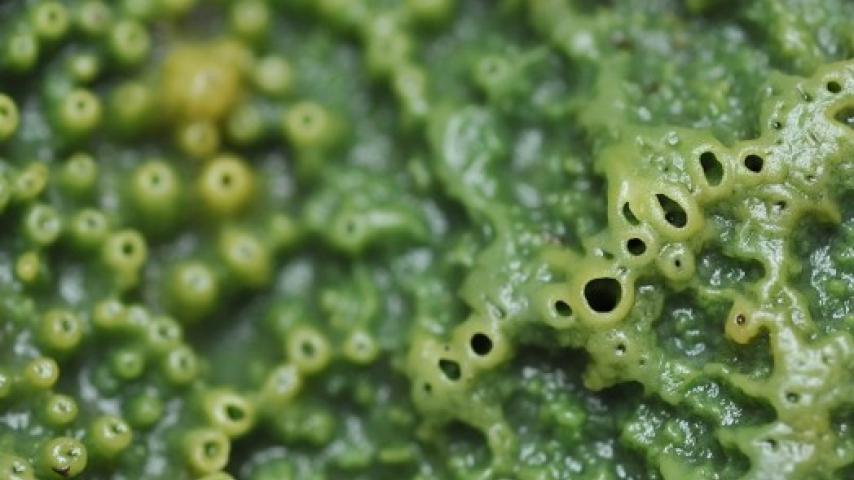Breadcrumb Sponge (Halichondria panicea)
Don’t expect to wash yourself with this sponge, nothing like the familiar bathroom object. Instead it forms a holey crust on rocky substrates or projects up in tubes, some of which branch.

KINGDOM Animalia - PHYLUM Porifera - CLASS Demospongiae - ORDER Halichondrida -FAMILY Halichondriidae
The surface around the many holes is smooth and glassy, although when handled, it crumbles like a slice of dried bread, thus the name. Individual sponges can be several feet in diameter and project up from the substrate as much as inch or more.
It is usually a dirty yellow to dull orange color and may have a greenish tinge from symbiotic algae on its surface. Just as in lichens and many corals, the algae (zoochlorellae) living on the surface provide carbohydrate nutrients to the sponge, while the sponge furnishes a substrate in which the algae are sheltered and somewhat protected from the elements.
The abundant holes are what make this organism obviously a sponge. Each of them is an osculum, and water that is circulated through the body is expelled through these holes. The water enters through much smaller pores, each called an ostium, and circulates throughout the animal. It is appropriate to use the word ‘animal’ from time to time, as a sponge looks like anything but.
Many sponges have a hard internal skeleton of spicules, varying from large to small and being of either calcareous (calcium carbonate) or siliceous (silicon dioxide, as in glass) composition. The spicules are often sharply pointed and can penetrate skin easily, so caution is advised when handling sponges. This species has glassy spicules that are long, rather thick, and tapered at both ends but not arranged in any particular pattern.
This sponge is a characteristic feature of the intertidal zone, especially where there is wave action and good water circulation, providing abundant water flow through the body and good opportunities for both respiratory oxygen and the bacteria, algae, and detritus that make up its diet. Both of these objects, respiratory gases and food, are circulated throughout the same channels, indicating this as a primitive type of animal indeed, in fact a very early stage of multicellular organization.
Another characteristic of this sponge is its smell, which has been described as exploded gunpowder. This may represent an antipredator chemical, but quite a few predators eat Breadcrumb Sponges. They include several snails and quite a few nudibranchs (sea slugs). Several sea stars also include Halichondria in their diet. Perhaps the gunpowder chemical only repels vertebrates, but it is surprising that the glassy spicules embedded in the body do not deter the invertebrates also!
Sponges reproduce asexually by budding, a fragment breaking off and eventually attaching itself to a new substrate. They also reproduce sexually and, rather surprisingly, are dioecious (the sexes in different individuals). Spawning is somewhat synchronized. Spermatozoa are shed into the water and taken into the ostia of females. The eggs are fertilized within the female and then hatch into larvae that are shed into the water column. They settle out several months later and form a new sponge.


